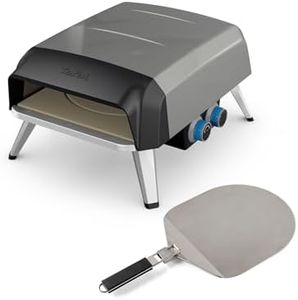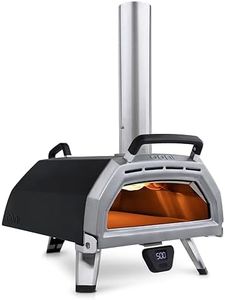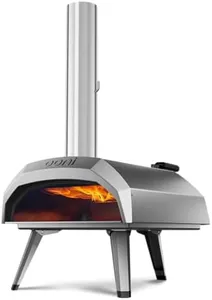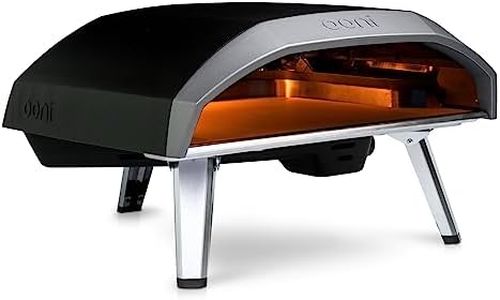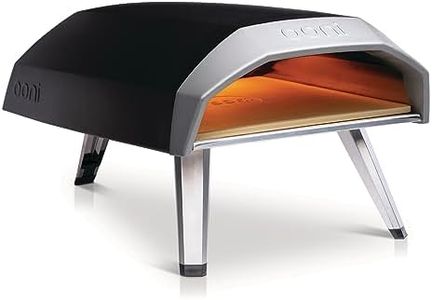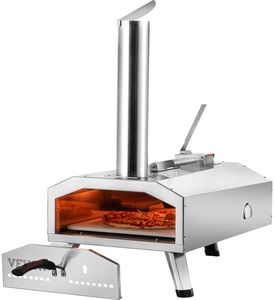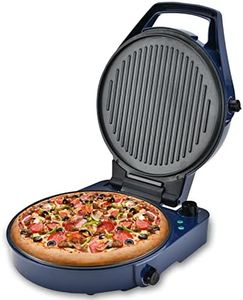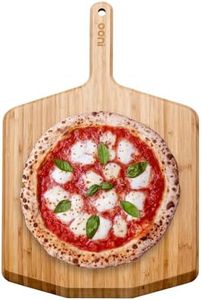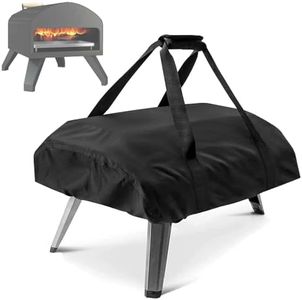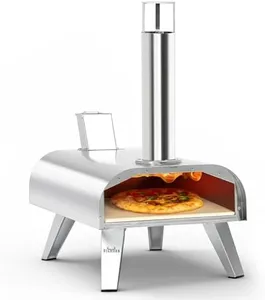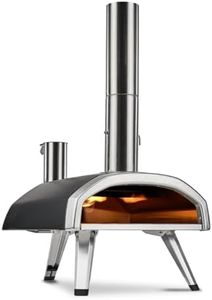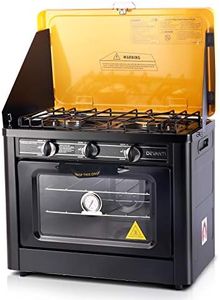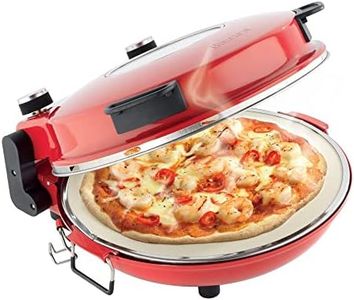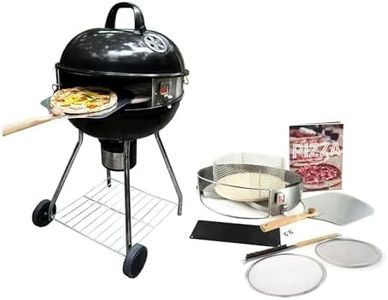We Use CookiesWe use cookies to enhance the security, performance,
functionality and for analytical and promotional activities. By continuing to browse this site you
are agreeing to our privacy policy
10 Best Outdoor Pizza Ovens
From leading brands and best sellers available on the web.By clicking on a link to a third party's website, log data is shared with that third party.
Buying Guide for the Best Outdoor Pizza Ovens
Choosing an outdoor pizza oven can really elevate your backyard cooking experience. The right oven will help you create delicious pizzas with crispy crusts, but to make the best choice, you need to understand the key features that distinguish one oven from another. Pay attention to how and where you'll be using the oven, the type of pizzas or other foods you might want to cook, and how much space and portability you need. Knowing your main priorities will help you match your needs to the right combination of features and design.Fuel TypeThe fuel type refers to what powers the oven—common choices for outdoor pizza ovens are wood, gas, charcoal, or multi-fuel. Wood-fired ovens create that classic smoky flavor and can reach very high temperatures, but they require more effort to manage. Gas ovens are easier to operate and heat up quickly, making them more convenient for regular use. Charcoal offers a mix of smoky flavor and good heat. Some ovens allow you to switch between different fuel types for versatility. Think about how involved you want the cooking process to be and the flavors you prefer—wood and charcoal for traditionalists and flavor chasers, gas for convenience and speed.
Maximum TemperatureThe maximum temperature tells you how hot the oven can get. Traditional Neapolitan-style pizzas cook best at very high temperatures, around 800°F (430°C) or higher, which creates a puffy yet crisp crust in just a couple of minutes. If you plan to make classic, restaurant-style pizzas, look for an oven that can reach at least 700°F. Lower temperatures (500–650°F) are fine for thicker-crust or pan pizzas, bread, or even roasting meats and veggies. Higher temperatures mean faster cooking and more versatility, but for basic family pizza nights, a mid-range oven will do fine.
Size and Cooking AreaThe size and cooking area determine how large your pizzas can be and how many you can cook at once. Compact ovens can make a single small to medium pizza at a time, which is perfect for couples or small families. Larger ovens let you bake bigger pizzas or multiple pies, which is great for parties or feeding a crowd. Consider both the physical space you have outdoors and how much pizza you want to serve per batch—pick a size that fits comfortably in your outdoor setup and meets your entertaining or family needs.
PortabilityPortability is about how easy it is to move or store the oven. Some ovens are designed to be lightweight with handles or foldable legs, perfect if you want to take them camping or to friends' houses, or need to store them away after use. Others are large and stationary, meant to be a permanent backyard feature. If you'll move the oven often, go for a portable model. If you want a sturdy, showpiece oven that stays put, weight and mobility are less important.
Preheat TimePreheat time is the duration the oven takes to reach cooking temperature. Some ovens can get hot in as little as 15 minutes, while others, especially larger wood-fired models, might need 45 minutes or more. Fast preheating is great if you want to whip up pizza on short notice, while longer preheat times are less of an issue if you enjoy a slow, social cooking process. Gauge your patience and how spontaneous your pizza parties tend to be when weighing this factor.
Material and Build QualityMaterial and build quality affect how well the oven retains heat, stands up to the weather, and how long it will last. Common options include stainless steel, which is rust-resistant and easy to clean, and brick or stone, which offers excellent heat retention but is heavier and more traditional-looking. Better construction generally means more consistent results and a longer-lasting oven. Choose a build that suits your climate and whether you plan to leave the oven outside year-round.
